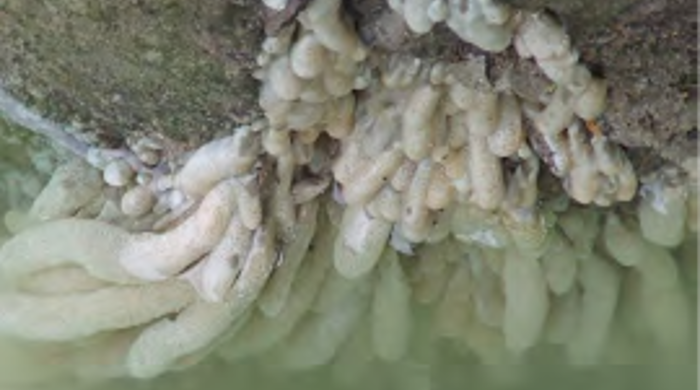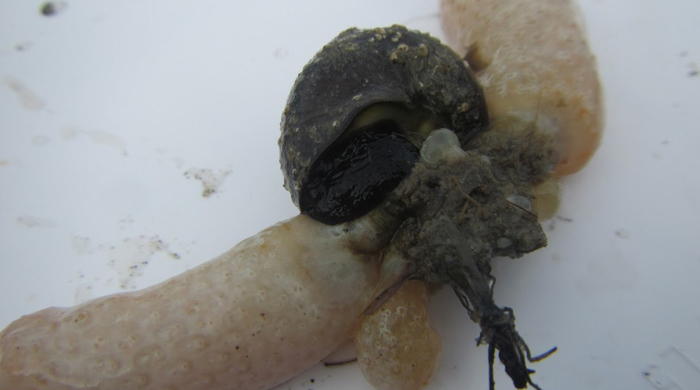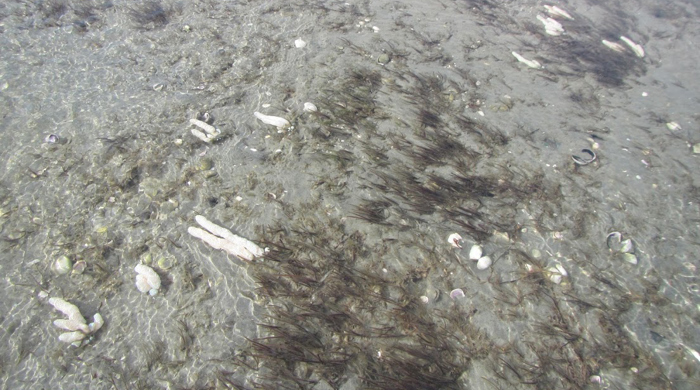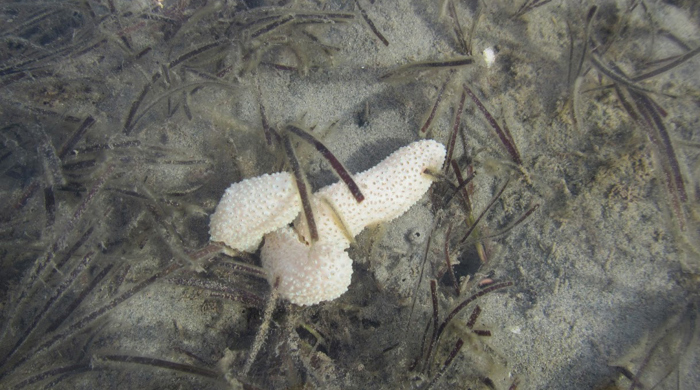Eudistoma elongatum
Australian droplet tunicate
Also known as:
Eudistoma sea squirt
Family: Polycitoridae
Origin: Australia
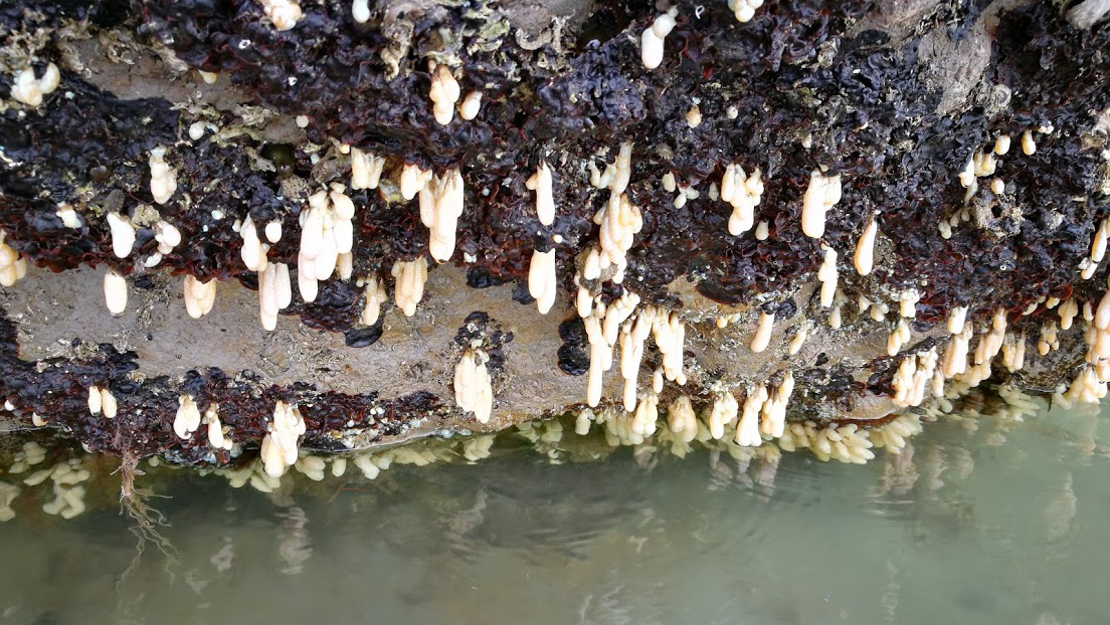
Regional Pest Management Plan (RPMP) status
- Whole region — Sustained control
General description
Firm and gelatinous to the touch. It forms large colonies that attach to hard surfaces and look like clusters of white or cream coloured cylindrical tubes. Colonies are generally 5-30 cm long, but can sometimes reach 1.5 m long.
What you need to know
To help protect our environment:
- You must not breed, distribute, release or sell any Australian droplet tunicate within the Auckland region.
- If you’re in charge of any craft in the Auckland region you must ensure that the level of fouling on the hull and in niches of the craft does not exceed ‘light fouling’.
- If you’re in charge of any craft in the Auckland region you must ensure that it is free of all ballast water, bilge water, holding tank water or sea water held in any other container when entering any marine body from the land.
Habitats
Can inhabit a wide range of habitats and but is generally found in soft-bottomed tidal habitats and on hard surfaces such as wharf piles, aquaculture equipment and mangrove roots. It is most commonly spread as fouling on marine farming equipment and occasionally on boat hulls.
Impact on environment
It grows rapidly and will often reach high abundances in summer months; altering tidal habitats and competing with native species for space and food.
Control
Management
Before moving your boat or other craft to new locations, make sure the hull, anchor chain and all other equipment on board is clean and free of marine pests or other fouling. Think about where you’re taking on or releasing ballast, bilge or holding tank water, or water in any other container such as chilly bins, to avoid spreading marine pests.
For more information on Australian droplet tunicate and how to avoid spreading them, please visit Prevent pests from spreading or contact Auckland Council at pestfree@aucklandcouncil.govt.nz.
